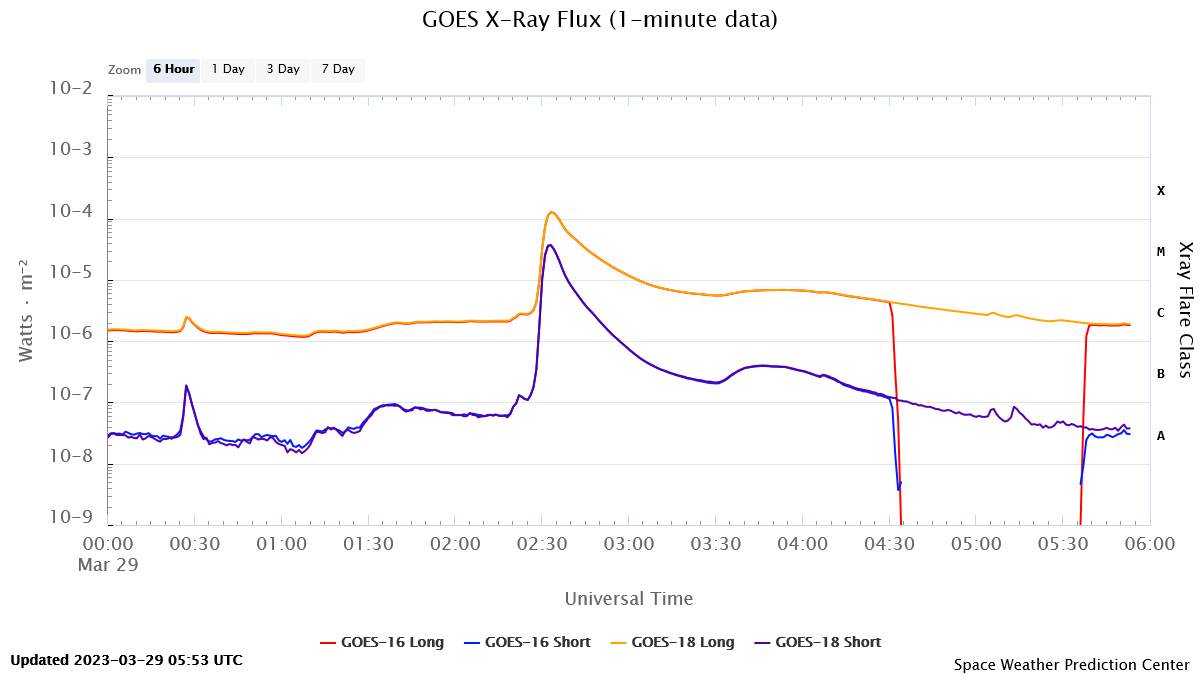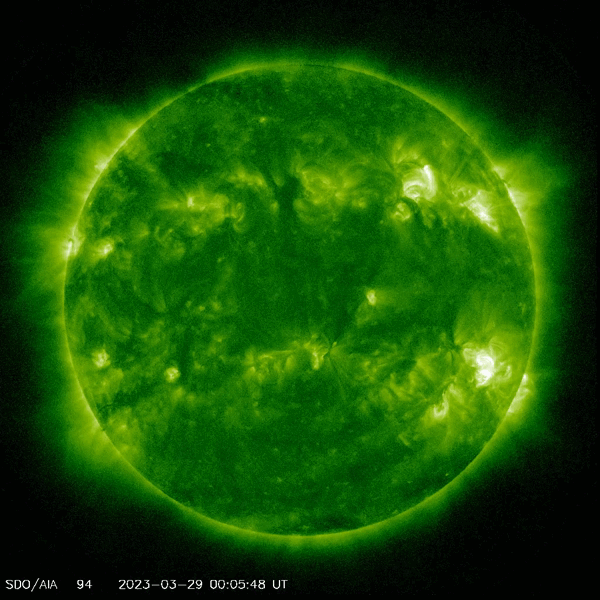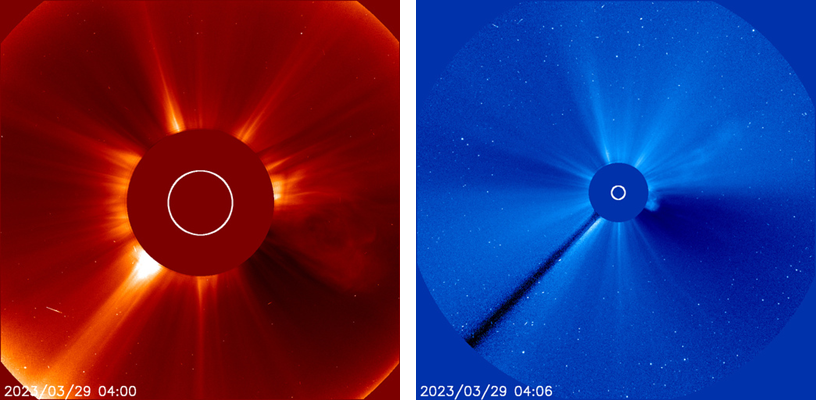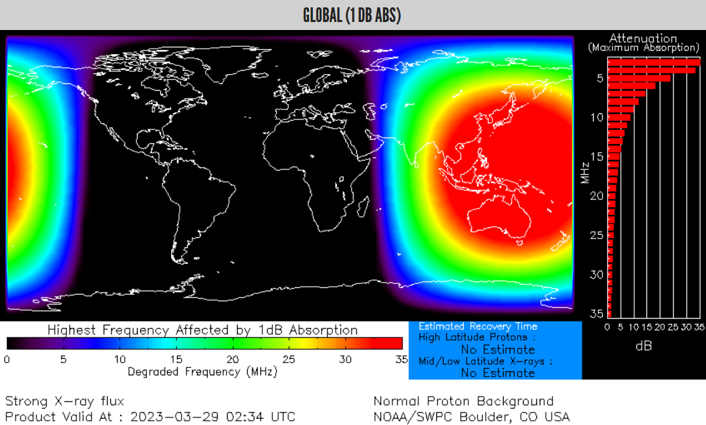Space weather forecasters got an X-class flare for breakfast this morning when NOAA 3256 produced an X1.2 flare peaking at 02:33 UTC on 29 March (GOES soft x-ray plot underneath), lasting 22 minutes. This region had been quiet over the last few days and showed signs of decay. At the time of this writing, GOES has not observed an enhancement in the proton flux.

The imagery underneath shows the eruption as seen in extreme ultraviolet (EUV) by SDO/AIA 094 (multi-million degrees). The blooming and diffraction patterns in the EUV images are image artefacts, not related to the flare - See this STCE newsitem for more info. The AIA 094 imagery shows a few post-eruption coronal loops and a faint cusp ("flame-like" structure). Some coronal dimming can be seen using the Solar Demon tool (SIDC). The flare was preceded by an eruption just beyond the southwest solar limb about an hour earlier (around 01:30 UTC), which may have been the trigger of the X-class eruption, but further analysis is required.

So far, no Type II radio burst has been reported by the Radio Solar Telescope Network (RSTN ; NOAA/SWPC event reports ; Learmonth spectrogram). However, based on the observed EUV features, a coronal mass ejection (CME) might have been associated with this eruption. This seems to be confirmed by the most recent coronagraphic images by SOHO (there are no STEREO-A coronagraphic images available yet) showing a faint CME moving towards the west. The observed CME seems not very wide with little chance on an earth-directed component. The bulk of the CME is certainly directed away from Earth. A full analysis by the SIDC forecasters is ongoing, also to determine if the observed CME (around 04:00 UTC) might have been associated with the earlier farside eruption around 01:30UTC.

Modestly enhanced radio bursts were observed at GNSS (RSTN ; NOAA/SWPC) and higher frequencies. The reported burst value of 140 sfu near the solar radio flux frequency of 2.8 GHz (10.7cm radio flux) seems not high enough to be classified as a Tenflare (background value of 158 sfu, as reported by Penticton ). The map underneath (D-RAP ) shows that the soft x-ray and EUV emission from this flaring event may have resulted in a radio black-out affecting HF radio communications over mainly over East-Asia, Japan, the Philippines, Indonesia, Australia and New Zealand. An advisory for civil aviation has been issued (PECASUS , CRC). Magnetometer stations in e.g. Guam (Intermagnet) reported a weak solar flare effect ("magnetic crochet"; more info) of about 5 to 10 nT. Further strong flaring from this active region is unlikely.






